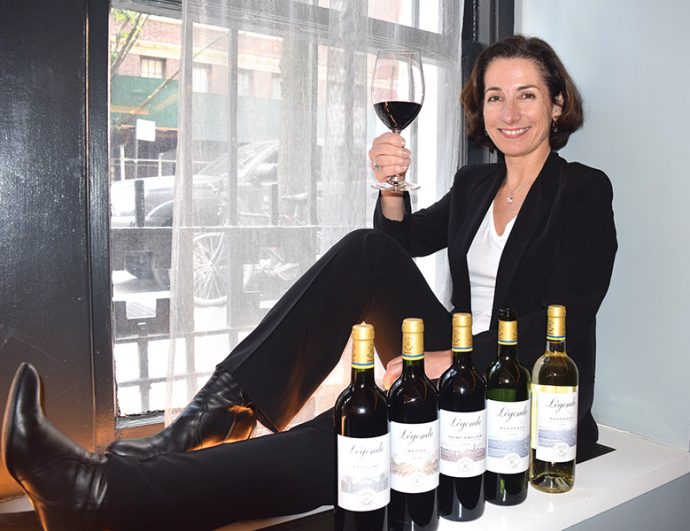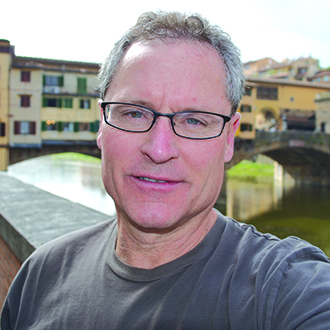Diane Flamand has a wonderful job: She is employed by the Rothschild wine family currently in their sixth generation of ownership of Lafite-Rothschild, certainly one of the most recognized and respected names in all of wine.
Wines from Lafite-Rothschild sell for many hundreds of dollars and often reach into the thousands for select vintages. Lafite is one of the first-growth wines of Bordeaux, a classification of wine excellence dating from 1855. It is a special occasion wine for people lucky enough to inherit a bottle or two, lucky enough to be able to afford it or lucky enough to have good friends who can afford it. I have tasted wines from Château Lafite-Rothschild several times. It is always a noteworthy event not to be forgotten.
The Château, in Pauillac, France, has bought up properties or entered into partnerships all over the world, from Chile and Argentina to Languedoc-Roussillon and Sauternes closer to home. It has recently planted vines in China to test the grape-growing terroir and the markets of Asia. Any Château Lafite-Rothschild first-growth wine is very expensive and can take decades of patience to reach its full expression and potential. Flamand was hired as the winemaker for the Légende line, known for its affordable and easy “drink-now” wines made with the Lafite touch. Or, as she told me, “The Légende line of Lafite-Rothschild wines is made with finesse, elegance and balance.”
The grapes on the estate of the Château are all called for, so how do you get the fruit you need to make these Légende wines? Flamand works with local regional winemaking cooperatives where she has the opportunity to oversee all aspects of grape cultivation and winemaking. There was a time when wine cooperatives made dull and uninteresting wines. Grape growers were encouraged to increase the yields of each vine, as they were paid by the weight of their deliveries. Today, the growers are encouraged to deliver a smaller yield consisting of more flavorful berries, which will make a significantly better wine. The Légende Bordeaux Blanc and Bordeaux Rouge use grapes from various sources in Bordeaux. They also produce better and more nuanced wines, specifically from notable growers in the Bordeaux subregions of Medoc, Saint-Emilion and Pauillac.
Our tasting was at Vaucluse restaurant on Park Avenue at 63rd Street in Manhattan. Owner and chef Michael White crafted an outstanding multicourse meal to enhance each wine. The wines were poured as each course was being delivered. These wines can stand alone to be consumed just with friends over conversation, but they rose to another plateau when tasted with food.
Our first wine was the Légende 2016 Bordeaux blanc. At 50 percent Sauvignon Blanc, 40 percent Semillon and 10 percent Sauvignon Gris, it showed citrus flavors with lovely aromatics. There was a mineral contribution of flint and limestone. No oak contribution enhanced the fruity flavors. This was followed by the Légende 2016 Bordeaux Rouge. This wine was 60 percent Cabernet Sauvignon and 40 percent Merlot and showed dark and red cherry notes with hints of blueberry. There was a touch of oak aging for texture, not flavor.
Our next pour was the Légende 2015 Medoc. At 70 percent Cabernet Sauvignon and 30 percent Merlot, it threw a peppery and pleasantly spicy dark cherry flavor. Flamand told me, “This wine, as all the wines of this line, can be drunk now. But it also will benefit from aging.” Her 2014 Saint-Emilion showed a pleasant earthiness, owing to its 85 percent Merlot. The 15 percent Cabernet Sauvignon lent dark cherry flavors with balanced tannins.
Our final red was a 2014 from Pauillac. This was a classic Bordeaux blend with more body, more spiciness and hints of tobacco. Flamand said, “This is a beautiful and approachable Pauillac.” Approachable means affordable and it over-delivers.
In 1984, the Château acquired an estate, Château Rieussec in Sauternes, a region made famous for botrytis, a fungus that attacks and concentrates grape flavors. This produces a lovely and unctuous sweet wine mostly served with dessert. A 2014 vintage from the estate’s second label, Château de Cosse Sauternes, was a perfect finish as the sweetness was balanced by a beautiful acidity. These wines can be bought for about $18 for the Bordeaux Blanc and Rouge, $27 for the Medoc, $45 for the Saint-Emilion, $54 for the Pauillac and around $30 for a half-bottle of the Château de Cosse. It is likely that case discounts will apply at your local store. Beautiful flavors, affordable prices, the Lafite-Rothschild touch: Now that’s ‘Légende’-ary.
Write me at doug@dougpaulding.com.


